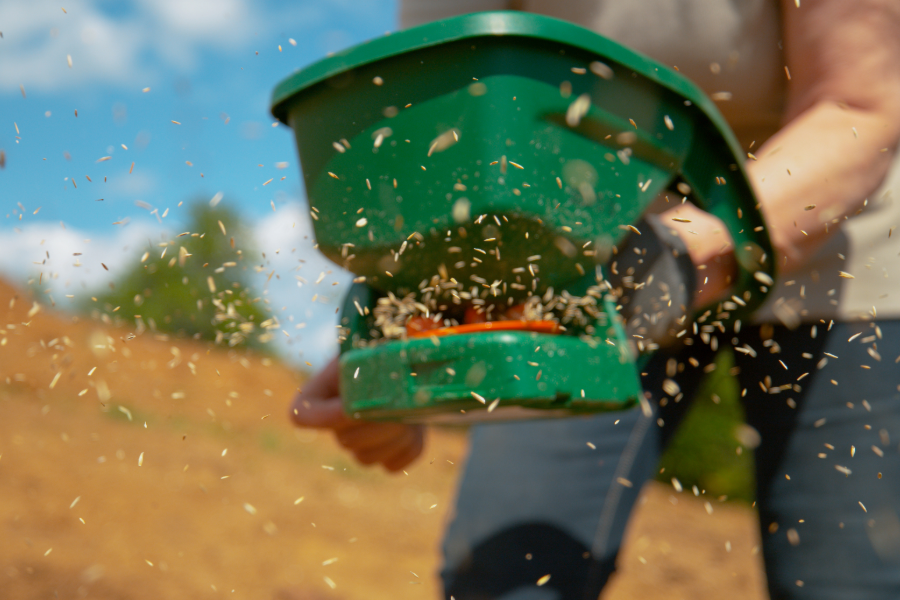
If you’re looking to learn how to plant grass seed, we’ve got some tips for you from our supplier Twin Cities Seed! We also wanted to let you know that we stock many types of premium grass seed from Twin Cities Seed by the bag or in bulk!
From classic Sunny Lawn seed to Dense Shade Mix , from Salt Tolerant Blend to the U of M Bee Lawn Mix, you’ll find a grass seed mixture to meet your needs!
Stop into the garden center to see the latest stock, talk to our staff, and choose the best seed for your projects and check out the general planting instructions below!
Don’t have a broadcast spreader? Rent one from us! Incredibly affordable rentals available for your project!
Twin Cities Grass Seed Planting Instructions
- Choose the Right Seed: Select a grass seed that is well-suited for your region and the specific conditions of your lawn, such as sun exposure and soil type.
- Timing: The best time to plant cool season grass seed typically falls into one of three windows:
-
- The Spring – just after snow melt
- The transition from Summer to Fall – the combination of warm days and cool nights creates perfect growing conditions for the establishment of grass seed
- The Winter – when soil temperatures are consistently below 7 degrees Celsius
- Try to avoid the hot summer months. Heat stress will make it more difficult to establish your grass seed.
-
- Prepare the Soil:
- Clear the area of any debris, rocks, or weeds.
- Loosen the soil to a depth of about 2-3 inches.
- Level the surface for an even lawn.
- Fertilize: Before planting, add a high quality starter fertilizer to the soil to provide essential nutrients for seed germination and early growth. Starter fertilizers will typically have an equal or greater amount of Phosphorus than Nitrogen.
- Seed Application:
- Use a spreader to evenly distribute the grass seed over the prepared soil.
- Follow the recommended seeding rate listed for the product on our website
- Raking:
- Lightly rake the soil to cover the seeds with a very thin layer of soil.
- This helps protect the seeds and ensures good seed-to-soil contact.
- Watering:
- Keep the soil consistently moist until the grass is established.
- Water lightly and frequently to prevent the soil from drying out. Two to three light waterings (5-7 minutes each) is typically ideal.
- Germination and Growth:
- Germination time varies depending on the grass species.
- Once the grass has established, gradually reduce the frequency of watering.
- Mowing:
- Wait until the grass reaches at least three inches in height before mowing for the first time.
- Be sure not to remove more than one-third of the grass height in a single mowing.
- Maintenance:
- Continue regular watering and fertilization as needed.
- Address any weeds promptly.


